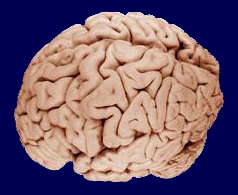Scientists have found that autism may be linked to the way cells link together in the developing brain. Writing in this week's Nature, Children's Hospital Philadelphia researcher Hakon Hakonarson and his team have used the power of the human genome project to home in on a series of genetic hotspots that appear to be associated with developing the condition, which affects up to 1% of the population, has a strong genetic basis and is more common in males than females.
 The US team used a technique known as genome-wide association to compare the DNA sequences from more than 4000 individuals with autism and over 6000 normal individuals. What they were searching for were genetic differences that repeatedly cropped up in the autistics but were not present in the normal controls. The analysis showed a hotspot on chromosome 5 (5p14.1) in a region encoding two genes called CDH9 and CDH10 which code for proteins known as Cadherins and which are cell adhesion molecules involved in linking nerve cells together.
The US team used a technique known as genome-wide association to compare the DNA sequences from more than 4000 individuals with autism and over 6000 normal individuals. What they were searching for were genetic differences that repeatedly cropped up in the autistics but were not present in the normal controls. The analysis showed a hotspot on chromosome 5 (5p14.1) in a region encoding two genes called CDH9 and CDH10 which code for proteins known as Cadherins and which are cell adhesion molecules involved in linking nerve cells together.
To establish how these genes might be involved in the development of autism the team studied brains from twenty-week human foetuses. The CDH9 and CDH10 genes were strongly expressed at this stage of development in the brain's frontal cortex, a region implicated in the condition. This, say the researchers, strongly suggests that cell adhesion molecules and hence a problem with the way that cells link together may be the underlying cause of autism. Further research is now needed to establish exactly how this occurs and how best to treat individuals with the problem.
- Previous Musical Cockatoos
- Next Interfering with inflammation










Comments
Add a comment